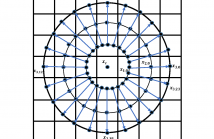- Image/Video Storage, Retrieval
- Image/Video Processing
- Image/Video Coding
- Image Scanning, Display, and Printing
- Image Formation

- Categories:
 3 Views
3 Views
- Read more about Lossless Video Coding Based on Probability Model Optimization Utilizing Example Search and Adaptive Prediction
- Log in to post comments
- Categories:
 20 Views
20 Views
- Read more about Skeleton Action Recognition Based on Singular Value Decomposition
- Log in to post comments
This work introduces new method using the singular value decomposition (SVD) to recognise human activities from skeleton motion sequences. The primary focus was on different activity durations, inaccurate placement of the joints and loss of information about position of the joints. For that we needed to develop a robust model. At first, the pose features are created for description of skeleton pose per frame, that is created by directional vectors to alljoint pairwise combinations without repetition.
- Categories:
 62 Views
62 Views
- Read more about Motion Blur Prior
- Log in to post comments
Priors play an important role of regularizers in image deblurring algorithms. Image priors are frequently studied and many forms were proposed in the literature. Blur priors are considered less important and the most common forms are simple uniform distributions with domain constraints. We propose a more informative blur prior based on the notion of atomic norm which favors blurs composed of line segments and is suitable for motion blur. The prior is formulated as a linear program that can be inserted into any optimization task.
- Categories:
 29 Views
29 Views
- Read more about AN ENHANCED LOCAL TEXTURE DESCRIPTOR FOR IMAGE SEGMENTATION
- 1 comment
- Log in to post comments
Texture is an indispensable property to develop many vision
based autonomous applications. Compared to colour, feature
dimension in a local texture descriptor is quite large as dense
texture features need to represent the distribution of pixel intensities
in the neighbourhood of each pixel. Large dimensional
features require additional time for further processing
that often restrict real-time applications. In this paper, a robust
local texture descriptor is enhanced by reducing feature
- Categories:
 59 Views
59 Views
- Read more about CSIOR:An Algorithm for Ordered Triangular Mesh Regularization
- Log in to post comments
3D scanners generate irregularly distributed cloud of points in
most of the cases. Dealing with such data, often in the form of
triangular meshes, requires a pre-processing step to regularize
the triangle facets shape and size. In this paper, we propose
CSIOR, a novel mesh regularization technique which is capable
of producing quasi-equilateral triangles, and distinguished
by two novel features, namely, its intrinsic ordered aspect and
its preservation of the geometric texture of the surface (relief
- Categories:
 48 Views
48 Views
- Read more about Spatial Keyframe Extraction of Mobile Videos for Efficient Object Detection at the Edge
- Log in to post comments
Advances in federated learning and edge computing advocate for deep learning models to run at edge devices for video analysis. However, the captured video frame rate is too high to be processed at the edge in real-time with a typical model such as CNN. Any approach to consecutively feed frames to the model compromises both the quality (by missing important frames) and the efficiency (by processing redundantly similar frames) of analysis.
ICIP2020.pdf
- Categories:
 16 Views
16 Views
- Read more about PerceptNet: A Human Visual System Inspired Neural Network for Estimating Perceptual Distance
- Log in to post comments
Traditionally, the vision community has devised algorithms to estimate the distance between an original image and images that have been subject to perturbations. Inspiration was usually taken from the human visual perceptual system and how the system processes different perturbations in order to replicate to what extent it determines our ability to judge image quality. While recent works have presented deep neural networks trained to predict human perceptual quality, very few borrow any intuitions from the human visual system.
- Categories:
 21 Views
21 Views
- Read more about Boundary of Distribution Support Generator (BDSG): Sample Generation on the Boundary
- Log in to post comments
- Categories:
 112 Views
112 Views
- Read more about Always Look on the Bright Side of the Field: Merging Pose and Contextual Data to Estimate Orientation of Soccer Players [Slides]
- Log in to post comments
SlidesICIP.pdf
- Categories:
 14 Views
14 Views